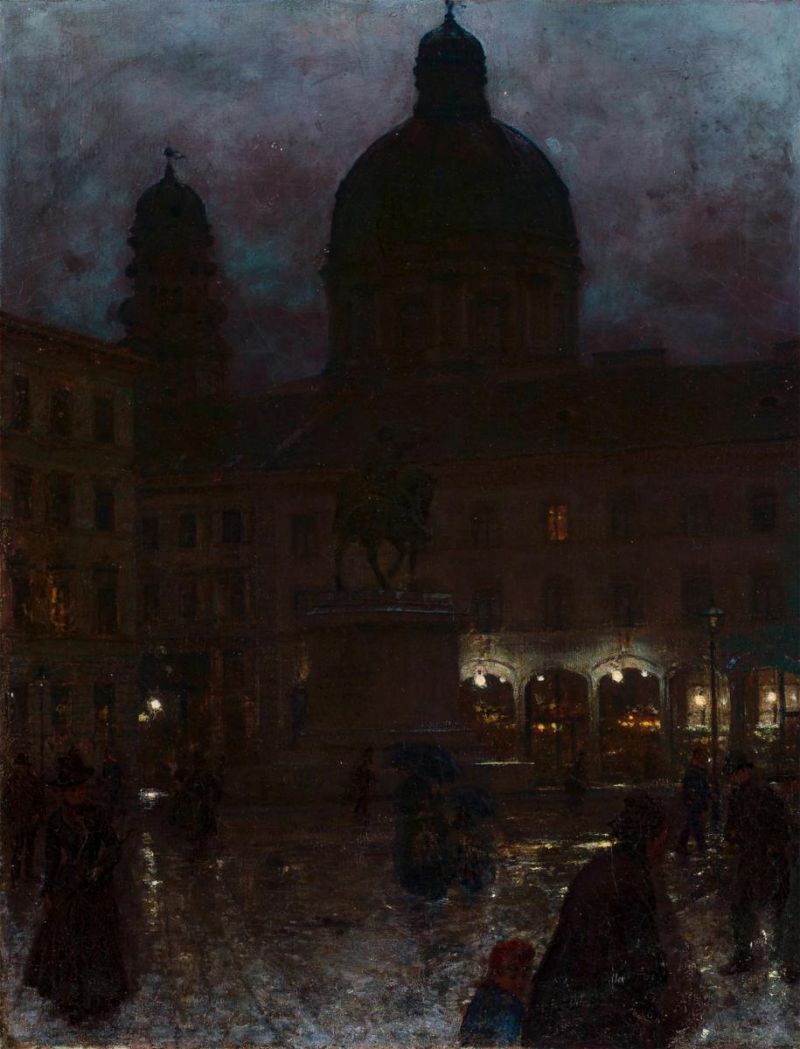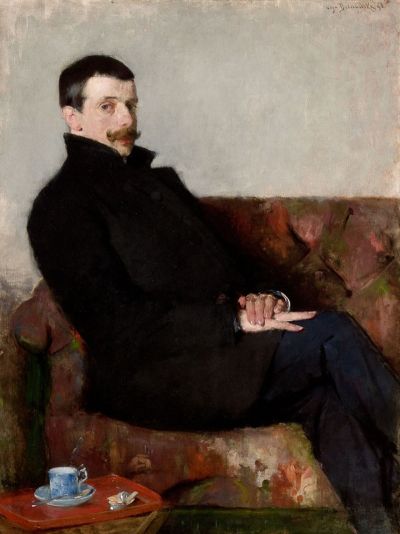Polish artists in Munich 1828-1914
Mediathek Sorted
-
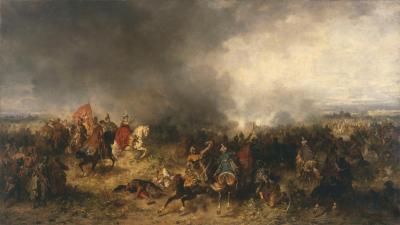
-
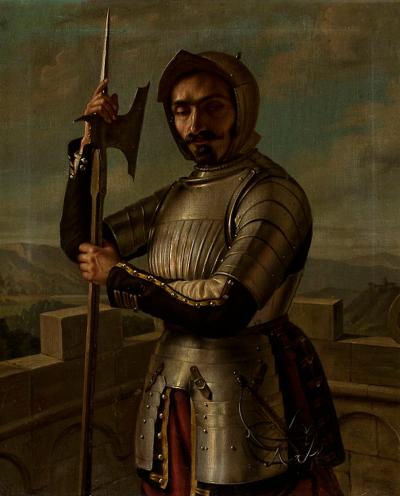
-
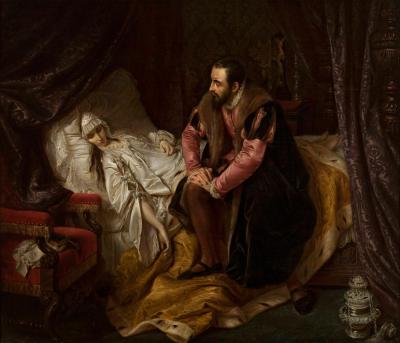
-
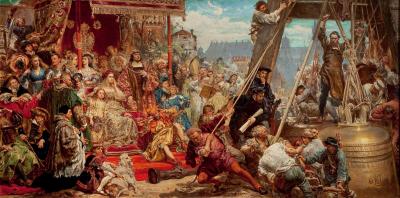
-
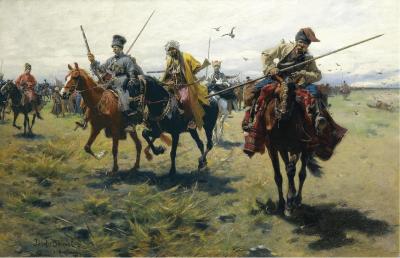
-
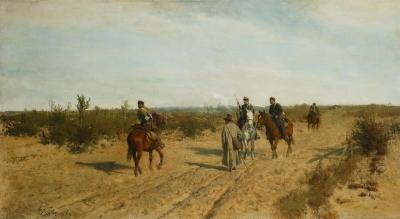
-
![Abb. 7: Aleksander Gierymski (1850-1901) Abb. 7: Aleksander Gierymski (1850-1901) - Aleksander Gierymski (1850-1901): Im Atelier des Künstlers [in München], 1869/70.](/sites/default/files/styles/width_100_tiles/public/assets/images/7_gierymskia2.jpg?itok=U_gomzpn)
-
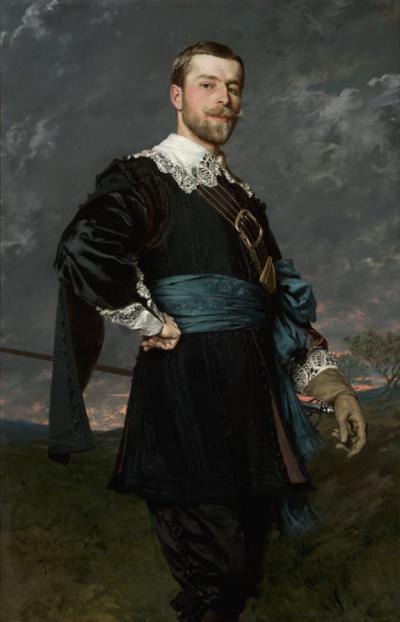
-
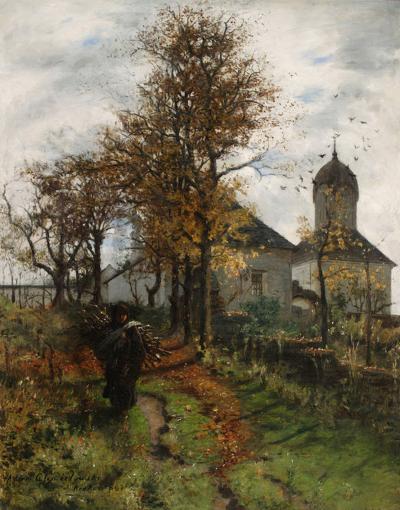
-
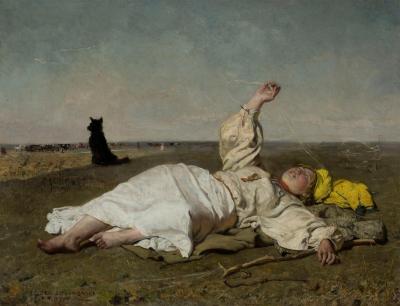
-
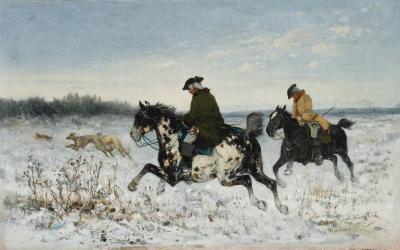
-
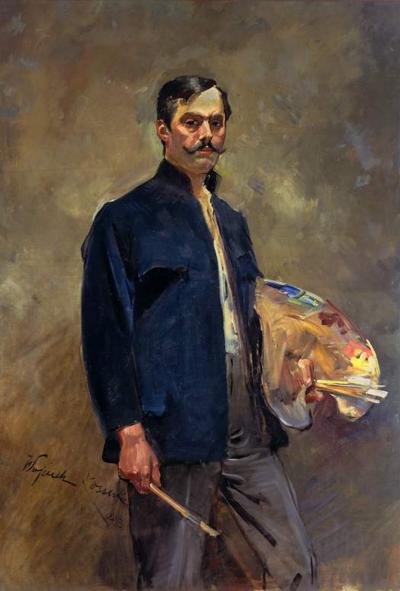
-
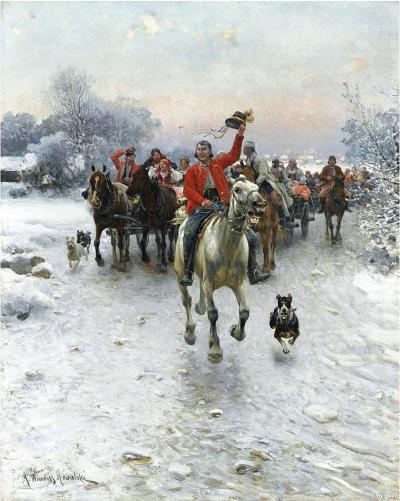
-
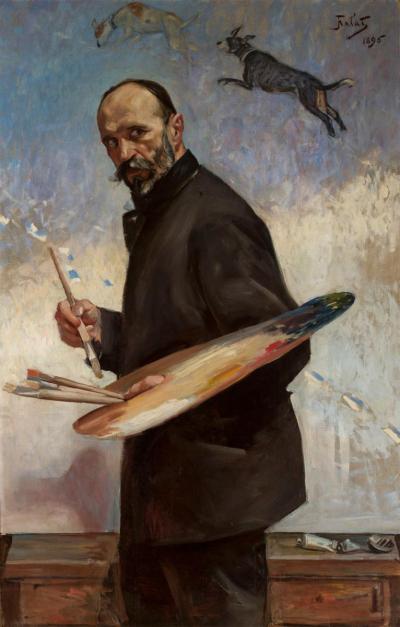
-
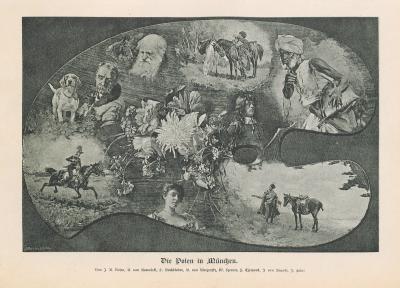
-
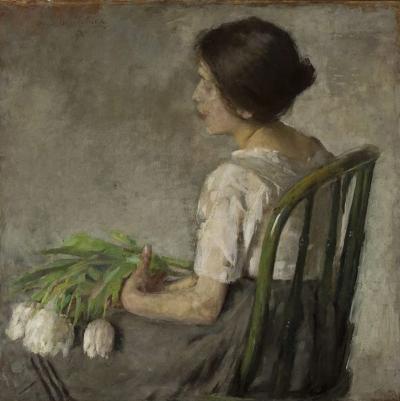
-
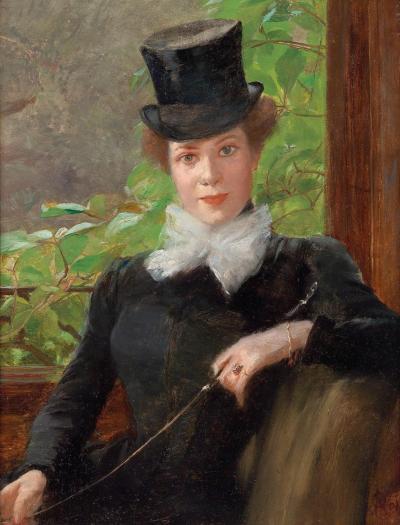
-
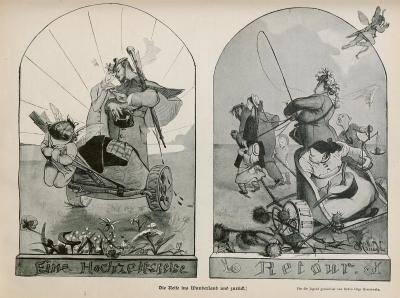
-

Polenkolonie in München - Hörspiel von "COSMO Radio po polsku" auf Deutsch

In 1828 the matriculation register at the Royal Academy of Visual Arts in Munich enrolled the sculptor Karol Ceptowski (1801-1847) from Poznań as its first Polish artist, and in 1832 a Lithuanian by the name of Jan Baniewicz as the first painter of Polish origin. The population of Congress Poland (i.e. the Kingdom of Poland), were faced with particularly massive restrictions in their civil rights after the November uprising in 1830/31 and the January uprising (1863/64) against Russian rule. Repressive measures undertaken by the partition powers, limitations in state school education and higher education, along with the political censorship of literary texts and works of art led to young Polish citizens fleeing abroad to study. Here they were also given political asylum.
However until 1862 this applied to three students a year at the most, with the exception of 1842 when six students began studying art at the Munich Academy. They came from the Russian and Austrian sectors of Poland. After students at the Warsaw School of Fine Arts had participated in the January uprising in 1863, the school was closed in the following year. In 1863 the number of new enrolments from Poland at the Munich Academy reached a peak of ten students. Amongst these was a certain Józef Brandt (1841-1915, Ill. 1), who had previously studied in Warsaw and now began a course of studies under the most important representative of history painting, Carl von Piloty. Three years later he was the head of his own workshop that attracted a huge number of students, primarily Polish. In 1878 he was appointed an honorary professor. Some of the students involved in the 1863 uprising only went to Munich in later years. These included Maksymilian Gierymski (1867), Ludomir Benedyktowicz (1868), Adam Chmielowski (1870) and Antoni Kozakiewicz (1871).
Polish students found Munich attractive because the capital of the Kingdom of Bavaria was one of the leading arts centres in Europe thanks to the picture galleries (German: Pinakotheken) that had opened in 1836 and 1853, and private galleries like that belonging to Count Schack that opened in 1862. Munich was also the centre of a lively trade in works of art. Living conditions were considered favourable, and the local people were generally tolerant of foreigners. However the decisive factor was the reputation and artistic aura of the professors teaching at the Academy. Up until 1940 a group of artists known as the Nazarenes were dominant in the city: it featured such names as Julius Schnorr von Carolsfeld, Heinrich Hess and the director of the school, Peter Cornelius. Its artistic programme of religious and moral renewal and its efforts in reviving a national art chimed in many ways with the ideas of Polish romanticism
One of their students was the Warsaw painter Aleksander Lesser (1814-1884, Ill. 2), who matriculated in 1835 and had his own workshop in Munich between 1840 and 1846. Lesser and Tytus Byczkowski from Minsk, who enrolled as a student at the Academy in 1837, were the first Polish painters to be accepted by the Munich Arts Society, that had been founded in 1823. Soon after their arrival in Munich and their enrolment in a course of study a large proportion of Polish art students also joined this society of artists and supporters. They began their careers as freelance artists in the city by taking part in the society’s exhibitions, purchases and prize draws of artworks. Up until 1914 150 Polish artists were members of the Munich Art Society. Alongside Lesser and Byczkowski another seventeen Polish art enthusiasts also joined the society in this early period. The majority of them were aristocrats, foreign members who did not live in Munich: these included Count Athanasius Raczynski, the author of a three volume edition entitled Histoire de l'art moderne Allemagne (1836-41) and the patron of Overbeck and Cornelius. He bequeathed to Overbeck a part of the Palais Raczynski that he had built in Berlin between 1842 and 1844. Under Leo von Klenze, Ceptowski took part in sculptural work in the Münchner Residenz, and Byczkowski was one of the fresco painters who decorated the Ludwigskirche. Korneli Szlegel (1819-1870) from Lemberg/Lwów, who began his studies in Munich in 1842 also had close links with the Nazarenes, as did Józef Simmler (1823-1868, Ill. 3) from Warsaw, who had previously been a student of Eduard Bendemann at the University of Pictorial Arts in Dresden. After completing his studies in Munich (from 1841 on) and Paris he returned to Warsaw where he was a highly esteemed painter of realistic religious and historical scenes, as well as portraits.
Under Wilhelm von Kaulbach, who was appointed director of the Munich Academy in 1849, and Carl von Piloty, who became a professor at the Academy in 1856, the Academy became an important centre of realistic historical painting in Germany. In 1858 Jan Matejko (1838-1893, Ill. 4) enrolled in the nature class given by Hermann Anschütz after he had absolved a complete course of studies at the Academy of Fine Arts in Kraków. True, according to Dariusz Konstantinów, Matejko found his “artistic ideals” in studying in Munich, but nonetheless saw that it was “no use studying there because the lessons are eternally boring, not for us, too ponderous, if I could I would leave for France today …”. After a short stop in Vienna in 1860 Matejko returned to Kraków. In 1873 he was appointed Director of the Academy of Arts there and is still regarded as Poland’s most important history painter. Another artist from Kraków, Parys Filippi (1836-1874), one of the most important Polish sculptures of his age, also came to Munich to enroll in the sculptor’s class.
Between 1863, the year of the January uprising, and 1875 over eighty Poles were enrolled in the Munich Academy. Alongside history painting, realist and landscape painting based on the French Barbizon School became more and more important. The Poles involved in art in Munich were a closed group. They tended to keep to themes from their fatherland, like views of villages, genre motifs from the everyday life of the country folk, scenes of horsemen, glorious events from Polish history and scenes from the failed uprising, all of which were extremely popular amongst the general public because of their picturesque qualities. They brought costumes, accessories and local sketches with them in order to create typical Polish scenes. The art historian Adolf Rosenberg – he was born in Bromberg/Bydgoszcz in 1850 – wrote the following about Józef Brandt (Ill. 5): “He creates the motifs for his genre and history pictures exclusively from the current life and history of his homeland, all of which are inspired by a typically Polish fervent patriotism. His pictures have a high ethnographic value thanks to his extensive study of Slavic types, old weapons and costumes and the melancholy landscape of his fatherland that resembles the Russian steppes […] One is almost tempted to believe that this Polish patriot had painted into these pictures his concern for the political fate of his fatherland and his opposition to the current situation there.”
Polish students at the Academy came into touch with the European art scene, especially the French Barbizon School of painting via, amongst others, the 1st International Exhibition of Art in the Royal Glaspalast in Munich. They often made up groups at the Academy. For their final diploma under Carl von Piloty three highly valued painters, Aleksander Gierymski, Władysław Czachórsky and Maurycy Gottlieb, jointly chose a literary theme, a motif from Shakespeare’s “Merchant of Venice“. At the end of the 1860s Polish students at the Academy began to take part in parallel courses at private art schools, whose teachers came from the circle of the Munich Art Society. Here they wanted to polish up their techniques in special courses like landscape painting. Brandt and a further eight Polish painters including Juliusz Kossak, Maksymilian Gierymski and Jan Chełmiński studied under the painter of horse and battle scenes, Franz Adam.
Brandt, the most important representative of Polish art remained in the Bavarian capital for the rest of his professional life. In 1877 he married Helena von Woyciechowski Pruszaków, the owner of the Orońsko estate, where he organised a painting academy during the summer months along with other artist colleagues. He is still regarded as one of the most famous history painters in Poland, and under the name Josef von Brandt he is seen as an important representative of the Munich School. Maksymilian Gierymski (1846-1874, Ill. 6), who began his studies at the Munich Academy in 1867, also made a name for himself in both countries as a master of realistic battle paintings. Alongside motifs from the January uprising he mostly concentrated on painting horses and hunting scenes from Masovia. In 1874 he became an honorary member of the Berlin Academy, and died in the same year in Bad Reichenhall. Just five years later (as Max Gierymski) he was the subject of a comprehensive article in the Allgemeine Deutsche Biographie . His brother, Aleksander Gierymski (1850-1901, Ill. 7), who arrived in Munich one year later, studied there until 1872, after which he went to Rome. His paintings of views of Munich (title illustration) were created during later stays in the city. They can now be found in the National Gallery in Warsaw. Władysław Czachórski (1850-1911, Ill. 8) was previously at the Academies in Warsaw and Dresden, before studying under Piloty in Munich from 1869 to 1873. After stays in Italy and France he finally settled down in Munich in 1879, where under the name of Ladislaus von Czachorski, he became a recognised portrait artist amongst the wealthy middle-class, as well as being appointed an honorary professor at the Munich Academy.
Between 1870 and 1875 forty-five Polish students began their studies at the Munich Academy, some of whom became famous painters. Adam Chmielowski (1845-1916, Ill. 9), who lost a leg during the January uprising, went into exile in Ghent and Paris before beginning a course in painting in Munich in 1870. Here he took an interest in the paintings of Anselm Feuerbach and Count Schack’s art collection, as well as painting atmospheric night scenes of the city. In 1875 he moved to Warsaw where he concentrated on religious motifs and joined the Franciscan order as Brother Albert in 1887. In 1989 he was made a saint. Józef Chełmoński (1849-1914, Ill. 10), who came from an aristocratic family in Masovia, began a three year course of studies in Munich in 1872, after which he went to Paris. He was primarily influenced by French realism and painted landscapes, as well as Polish and Ukrainian hunting and genre scenes in which he portrayed village life in his homeland.
Jan Chełmiński, Wojciech Kossak and Alfred Wierusz-Kowalski joined the Academy in 1873. Chełmiński (1851-1925, Ill. 11) studied under Józef Brandt and Franz Adam. His genre and hunting pictures enjoyed great popularity amongst the higher circles of society. He sold hunting pictures to the Duke of Sachsen-Coburg and Gotha and to the Bavarian royal family, and also had successful sales and exhibitions in Berlin, Vienna, London and Paris from 1876 onwards. In 1884 he went to London and New York. Rosenberg wrote the following about Chełmiński: “He is particularly accomplished in military genres linked to a characteristic landscape. However his colouring is harder and more colourful, his characterisation less energetic and his drawing not as bold and lively as his two compatriots [Brandt and Max Gierymski].” Kossak (1856-1942, Ill. 12), who had previously studied at the Academy of Art in Krakow, lived in Munich for three years. After this he studied at the École des beaux-arts in Paris, before returning to Krakow in 1884. From 1893 onwards he worked on the “Panorama of the Battle of Racławice” in Lemberg/Lwów. In 1895 he accepted an invitation to move to Berlin from his artist colleague Julian Fałat and two years later was appointed court painter (as Adalbert Ritter von Kossak) to Kaiser Wilhelm II, on the grounds of his outstanding battle paintings He returned to Krakow in 1902. Józef Brandt’s other students also included Wierusz-Kowalski (1849-1915, Ill. 13), who made a name for himself with horse scenes, wedding processions featuring traditional Polish costumes and toboggan rides featuring young laughing people; and Julian Fałat (1853-1929, Ill. 14), who began his studies in Munich in 1875. Whereas Wierusz-Kowalski remained in Munich and was appointed an honorary professor at the Academy in 1890, Fałat travelled throughout Europe and Asia from 1885 onwards, and made the acquaintance of Prince Anton von Radziwill (the future German Kaiser Wilhelm II) during a hunting stay. In 1889 he became a court painter. In 1889 he returned to Krakow as a Professor at the Academy of Arts.
Polish artists from Munich took part in international exhibitions like the World Exhibitions in Paris and Vienna in 1867 and 1873 respectively. At the first International Exhibition of Art in the Munich Glaspalast Brandt exhibited his paintings “Fair in a small town near Krakow” and a scene from the Thirty Years War. Maksymilian Gierymski was represented with his “Spinning Room in Poland“ and the “Duel between Tarlo and Poniatowski”, an “episode from Poland’s history”. In Paris Brandt exhibited his painting “Battle near Chotin”, and in Vienna his portrait of “Sobieski near Vienna“. All in all eight Polish artists from Munich were in the German delegation at the Vienna World Exhibition. They included the Gierymski brothers. Maksymilian exhibited scenes from the January uprising that would have been banned by the censor in the Russian partition sector. These included the “Alarmed Vanguard” (Ill. 6) and “Alarm in the Insurgents’ Camp“, as well as riding scenes and genre pictures like “Cossacks” and “In front of the Tavern”.
The stream of Polish art students to Munich continued after 1875, but now there was a lack of any great talent. Brandt and Wierusz-Kowalski were at the centre of the Polish scene. They opened their affluent houses to the new arrivals and put at their disposal “Polish“ props from the rich collection of objects in their workshops. Private schools became more and more important. The private school founded by the Hungarian genre painter Simon Hollósy was particularly popular amongst the Poles: he also offered summer courses in open-air painting in Hungary. Up till 1911 around thirty Polish painters studied at his school. The “Poland colony” described by Rosenberg at this time was perceived by others as a “closed school. In November 1887 the periodical “Kunst für alle” portrayed eight Polish artists including Brandt and Fałat, each of whom designed their own motifs on an artist’s palette (a characteristic art form for groups of artists at the time, that was also known in other cities with academy cities, Ill. 15). The accompanying text read as follows: “Some of the more excellent artists in huge colony of Polish artists residing in Munich have joined forces to immortalise themselves with light-hearted jokes, as illustrated here. From the harmony of the whole it is easy to see how these artists make up a common school. However its character is stamped with the genius of J. von Brandt which has influenced the other individuals to a greater or lesser extent.”
Between 1890 and 1914 new artistic directions came to the fore. Prominent amongst these were the secession style influenced by French Impressionism, and the crafts movement from England and Scotland. With the setting up of the journal Jugend in 1896 Munich became one of the centres of German Jugendstil. Polish artists like Stanisław Grocholski, Wacław Szymanowski and Olga Boznańska (1865-1940, Ill. 16) took part in exhibitions organised by the Münchener Secession that had been founded in 1892. Others like Otolia Gräfin Kraszewska (1859-1945, Ill. 17, 18), Edward Okuń and Feliks Wygrzywalski worked as illustrators for Jugend,. Amongst the private academies the school set up in 1891 by the Slovenian genre and portrait painter Anton Ažbe was particularly popular. Around thirty Poles studied there, alongside the Russian painters (between1896 and 1897) Alexey von Jawlensky and Wassily Kandinsky both of whom later became famous. In 1897 there appeared a further joint work by Polish artists in Munich, the Jednodniówka Monachijska, the “Munich special edition”, a unique art periodical in the style of Jugend containing vignettes, illustrations and reproductions of portraits, alongside poetry and prose text by Polish authors living abroad.
Between 1890 and 1914 one hundred and twenty-five Polish students enrolled at the Munich Academy, forty-five of whom after 1900. All in all, between 1824 and 1914, three hundred and twenty-two Polish students began an official course in art. If we count all the Polish artists documented in Munich, around 700 Polish painters, sculptors and architects were involved in Munich artists’ circles during this period. With the outbreak of the First World War in 1914 young Polish artists lost all interest in studying in Munich and turned to Paris as their point of orientation.
Axel Feuß, December 2015
Further reading:
Adolf Rosenberg: Die Münchener Malerschule in ihrer Entwicklung seit 1871, Leipzig 1887, pp. 46-48
Friedrich Pecht: Geschichte der Münchener Kunst im neunzehnten Jahrhundert, Munich 1888, pp. 420-424 („Die Polen, Magyaren und sonstigen Ausländer“), http://goobipr2.uni-weimar.de
Münchner Maler im 19./20. Jahrhundert (in six volumes), adapted by Horst Ludwig, Munich 1981-1994
Halina Ste̜pień: Artyści polscy w środowisku monachijskim. W latach 1828-1855 (Studia z historii sztuki / Instytut Sztuki, Polska Akademia Nauk, 44), Breslau/Wrocław 1990
Halina Ste̜pień / Maria Liczbińska: Artyści polscy w środowisku monachijskim. W latach 1828-1914. Materiały źródłowe (Studia z historii sztuki / Instytut Sztuki, Polska Akademia Nauk, 47), Warsaw 1994
Halina Ste̜pień: Artyści polscy w środowisku monachijskim. W latach 1856-1914 (Studia z historii sztuki / Instytut Sztuki, Polska Akademia Nauk, 50), Warsaw 2003
Halina Stępień : Die Polish Künstlerenklave in München (1828-1914), in: zeitenblicke 5 (2006), no. 2, http://www.zeitenblicke.de/2006/2/Stepien/index_html
Dariusz Konstantynów: Polnische Künstlern in München, in: Tür an Tür. Polen-Deutschland. 1000 Jahre Kunst und Geschichte, edited by Małgorzata Omilanowska, exhibition catalogue for the Berlin Festspiele, Berlin, Cologne 2011
Eliza Ptaszyńska (ed.): Ateny nad Izarą. Malarstwo monachijskie. Studia i szkice, Suwałki 2012

















































































